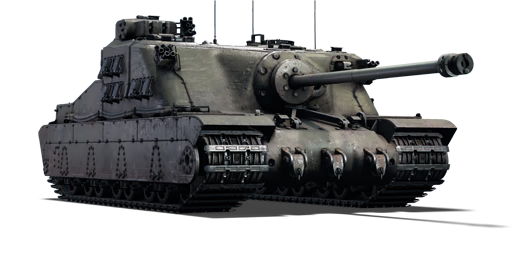



The Tank, Heavy Assault, Tortoise (A39) was conceived by the British Army in 1943 with the same design goal as the American T28/T95 super-heavy tank: as a heavy assault tank capable of defeating enemy fortifications (particularly the Siegfried Line) while also being immune to return fire. After the designing phase, the chosen design was given the name “A39 Tortoise” and 25 vehicles were immediately ordered for production in February 1944, as the British Army aimed to deploy the Tortoise platoon in combat as soon as September 1945.
However, as World War II concluded in the same month that the Tortoise was meant to be ready for service, the order for the Tortoise was reduced to only six vehicles. One example was sent to Germany for trials, in which it proved to be mechanically reliable. However, due to the tank’s massive weight of 81 tons, it had a very slow top speed and was difficult to transport. As such, the Tortoise was eventually phased out of service. Out of six vehicles, one survived in running condition and is on display at the Bovington Tank Museum.
The Tortoise was introduced in Update 1.55 “Royal Armour”. Often considered one of the few "super-heavy" tanks ever built, the name "Tortoise" perfectly describes the key aspects of the tank: very large, very slow, and exceptionally well-protected. The Tortoise can resist large amounts of incoming fire from its enemies thanks to its thick armour, especially when angled, as well as being capable of penetrating most tanks it will face with its powerful 32-pounder cannon. However, the Tortoise is not without weaknesses; its poor mobility renders it vulnerable to close air support, while a keen opposing tanker may exploit certain weakspots of the tank, particularly the large commander’s cupola.
| Ammunition | Type | Armor penetration (mm) at a distance: | |||||
|---|---|---|---|---|---|---|---|
| 10 m | 100 m | 500 m | 1000 m | 1500 m | 2000 m | ||
| APCBC | 256 | 253 | 241 | 226 | 212 | 199 | |
| HE | 31 | 30 | 28 | 26 | 24 | 22 | |
| Belt | Belt filling | Armor penetration (mm) at a distance: | |||||
|---|---|---|---|---|---|---|---|
| 10 m | 100 m | 500 m | 1000 m | 1500 m | 2000 m | ||
| AP-I/AP-I/AP-T | 9 | 8 | 6 | 3 | 0 | 0 | |












Mobility | |
|---|---|
Protection |
|---|
Firepower |
|---|